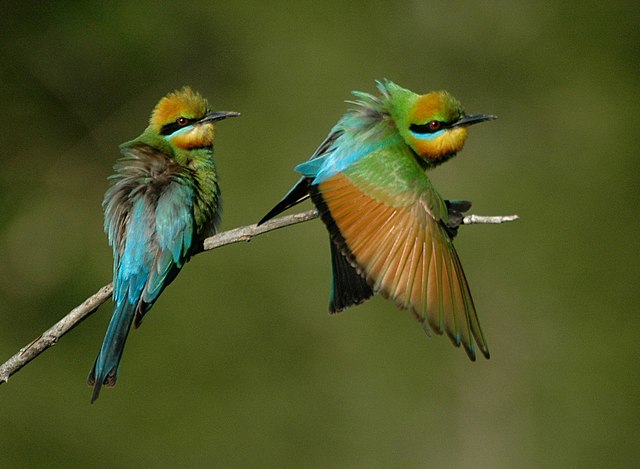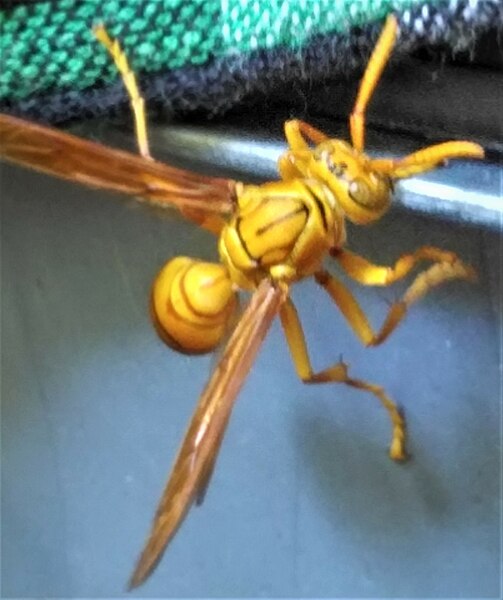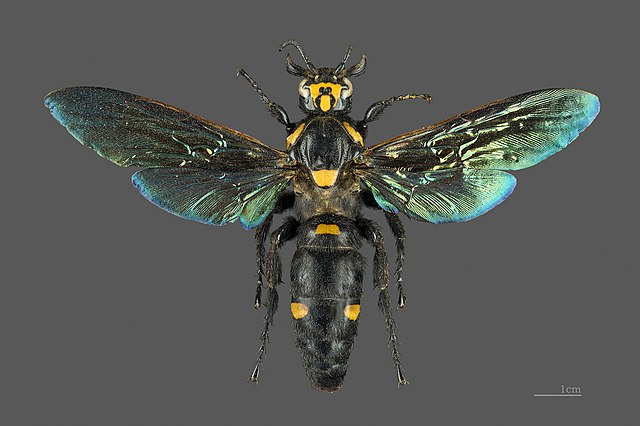The bee-eaters are a group of birds in the family Meropidae, containing three genera and thirty species. Most species are found in Africa and Asia, with a few in southern Europe, Australia, and New Guinea. They are characterised by richly coloured plumage, slender bodies, and usually elongated central tail feathers. All have long down-turned bills and medium to long wings, which may be pointed or round. Male and female plumages are usually similar.
Bee-eater
Rainbow bee-eaters, a Merops species
Merops species such as the white-fronted bee-eater usually have a black bar through the eye.
The blue-bearded bee-eater is associated with forests, where it forages in edge habitats
A wasp is any insect of the narrow-waisted suborder Apocrita of the order Hymenoptera which is neither a bee nor an ant; this excludes the broad-waisted sawflies (Symphyta), which look somewhat like wasps, but are in a separate suborder. The wasps do not constitute a clade, a complete natural group with a single ancestor, as bees and ants are deeply nested within the wasps, having evolved from wasp ancestors. Wasps that are members of the clade Aculeata can sting their prey.
Wasp
Polistes sp., India
Megascolia procer, a giant solitary species from Java in the Scoliidae. This specimen's length is 77 mm (3.0 in) and its wingspan is 115 mm (4.5 in).
Megarhyssa macrurus, a parasitoid. The body of a female is 50 mm (2.0 in) long, with a c. 100 mm (3.9 in) ovipositor








